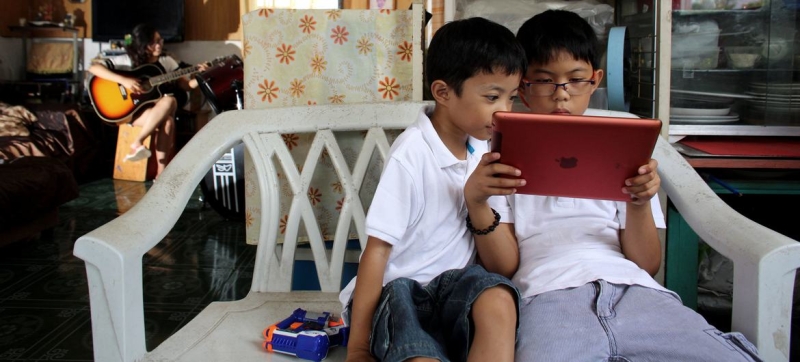
The Internet not only offers children great opportunities for development, but can also pose a threat to their safety. UNICEF debunks myths about children’s safety on the Internet Culture and education
On Safer Internet Day, which is celebrated on February 11, the United Nations Children’s Fund (UNICEF) suggests figuring out what misconceptions prevent us from better protecting children in the digital world.
The Internet has long been a part of children’s lives. It gives them a lot of opportunities: to study, communicate, play and develop. But along with this, there are also risks – bullying, cyberbullying, harmful content, attackers. There are many myths surrounding these topics that confuse parents and teachers, and worry politicians. UNICEF experts explain what is true and what is not.
Myth #1: The more access children have to the Internet, the better
Truth: The more children use the Internet, the higher the risk of encountering threats.
Yes, the Internet opens up enormous opportunities for children. But if the digital environment is not regulated, then along with useful content, children gain access to harmful content, such as hateful comments or scenes of violence.
Research has shown that in countries with high levels of Internet access, children are more likely to encounter aggression online. However, there are countries that have managed to minimize these risks. Their experience can be used in other countries to make the Internet safer for everyone.
What to do?
Experts propose developing laws that oblige Internet companies to take into account the rights of children, and also limit children’s access to harmful content and improve digital literacy.
Myth #2: Video games are bad for kids
The Truth: Games can be good for you if they’re designed with kids in mind.
We’ve been hearing for years that video games are bad for kids. But research shows that when games are designed correctly, they can help kids develop attention, logic, emotional intelligence, and even teach them how to build relationships.
Of course, not all games are good for you. But if developers focus on the needs of children, video games can become a powerful development tool.
What to do?
UNICEF calls for supporting the development of games that promote learning and development, and monitoring the games children play and discussing their digital experiences with them.
Myth #3: Online abuse is something special, not related to real life
Truth: If a child is being bullied online, they have most likely already been bullied in real life.
Cyberbullying rarely happens “out of nowhere.” Most often, it is a continuation of violence at school, at home, or among peers.
In addition, criminals who commit violence on the Internet often use it as a tool for real crimes – for example, they can persuade a child to meet.
What to do?
Experts warn that online threats should be considered in the context of real life. They also call for efforts to reduce violence among children in general.
Myth #4: The main danger is strangers
Truth: In most cases, online violence is committed by people the child knows.
Often, parents fear that their child will become a victim of an online attacker. But in reality, most cases of online abuse are committed by people they know – friends, family, or even romantic partners.
However, in some countries, stranger crime is actually more common. So it’s important to study national data and tailor protection measures to the real situation.
What to do?
All countries are encouraged to teach children online safety rules and explain how to behave in alarming situations.
Experts say it’s important to ensure that children understand that it’s okay to seek help. UNICEF also calls for the development of support programs for children who have experienced violence.
Opportunities and Risks
The Internet is a huge opportunity, but also a serious risk. Instead of being afraid of technology, we must learn to use it wisely. By debunking myths and relying on real data, we can make the digital environment safe and comfortable for children.
